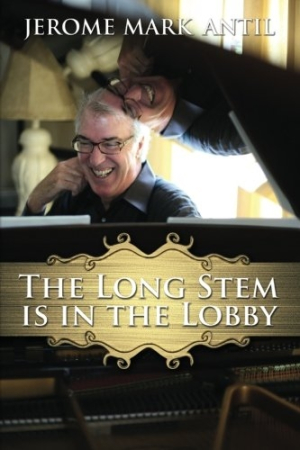
The Long Stem Is in the Lobby
This plucky narrative provides clear and personal episodic glimpses into a unique time in American history.
Come and take a walk down memory lane, back to 1959, and watch America change through the eyes of Jerome “Jerry” Antil. In The Long Stem is in the Lobby, Antil takes a rambling stroll through his coming-of-age years, from his wide-eyed first days at college, through his reckoning with racial prejudice, to his successful advertising career. Antil’s reminiscences serve as a sort of written scrapbook, offering episodic glimpses of one person’s experience of a unique time in American history.
The friendly grin in his cover photo and the buoyant tone of his writing give the impression that Antil is a likable guy. He can be self-effacing and poke fun at himself, but never lets himself get down for long. For instance, he describes his extravagant efforts to keep his first girlfriend from entering a convent—private jet rides and impossibly expensive gifts—but doesn’t dwell on his heartbreak when she sticks with her plan. Instead, he turns it into a lesson in “flair,” the go-the-extra-mile style that becomes his stock-in-trade in the advertising business.
Clearly written dialogue brings readers into a variety of scenes from Antil’s life, from dorm rooms to boardrooms. So, too, do period details like the “ratatattattattattattat” of a newsroom typewriter and the astonishing fact that fifty dollars would buy a respectable car in 1961. Most moments are fairly light, with little space given to reflection or introspection. Even the more historically significant moments—when Antil learns that Alabama Governor George Wallace won’t let his basketball team play against teams with black players, for example—are unembellished. Antil spins an entertaining tale about his own plucky response to Governor Wallace, but he doesn’t delve deeply into how moments like this affected his personal growth. Instead, he moves briskly on to the next event.
The chronological approach offers a clear structure, but as Antil’s career unfolds in the second half of the book, the connecting message or theme isn’t always evident. Antil’s professional successes do eventually allow him to do his own part to address racial inequalities in segregated city communities, but this isn’t a story about doing good deeds. Instead, it is the tracing of a career trajectory, with details of deals done and contracts signed. Some of these are fascinating—the clearly sexist story behind the Duncan Hines cake mix, for instance—but trimming a little from the comprehensive reporting of each promotion and job change would better sustain attention.
Antil closes with a collection of photographs and newspaper clippings—his glory days as a six-foot-ten “long stem” of a basketball player feature prominently—adding to the overall scrapbook feel of the book. The Long Stem Is in the Lobby may not offer earth-shattering revelations or intimate confessions, but it brings a clear, cogent, personal perspective to bear on a unique slice of American history.
Reviewed by
Sheila M. Trask
Disclosure: This article is not an endorsement, but a review. The publisher of this book provided free copies of the book and paid a small fee to have their book reviewed by a professional reviewer. Foreword Reviews and Clarion Reviews make no guarantee that the publisher will receive a positive review. Foreword Magazine, Inc. is disclosing this in accordance with the Federal Trade Commission’s 16 CFR, Part 255.
